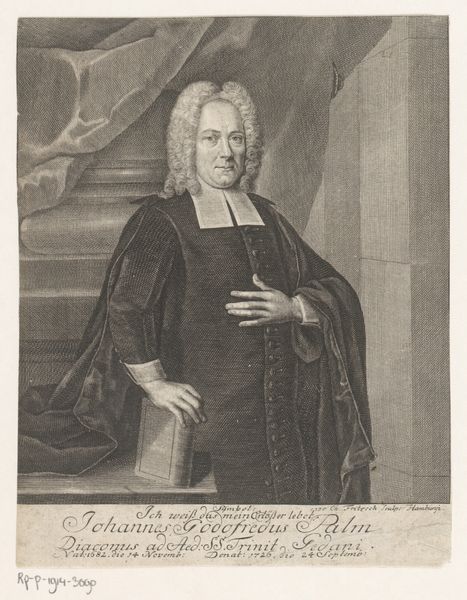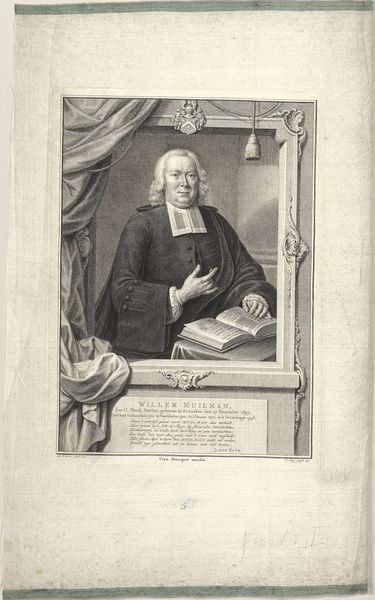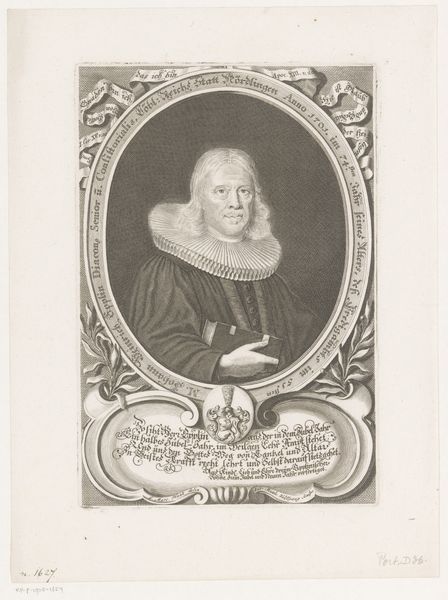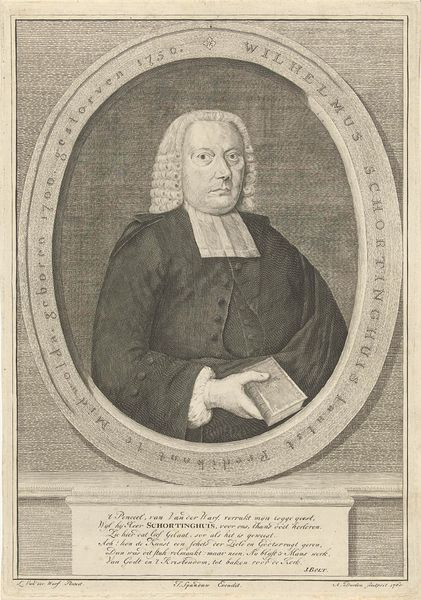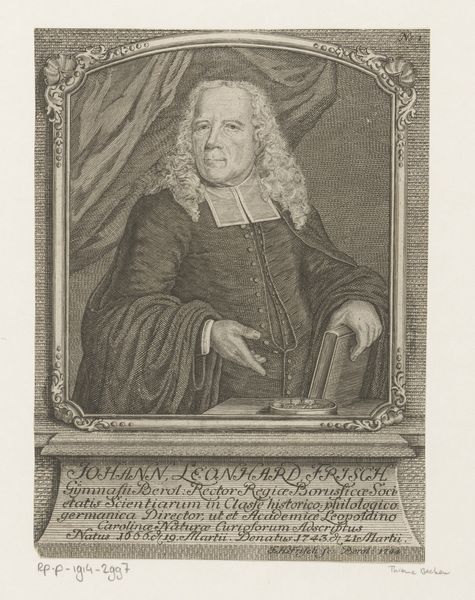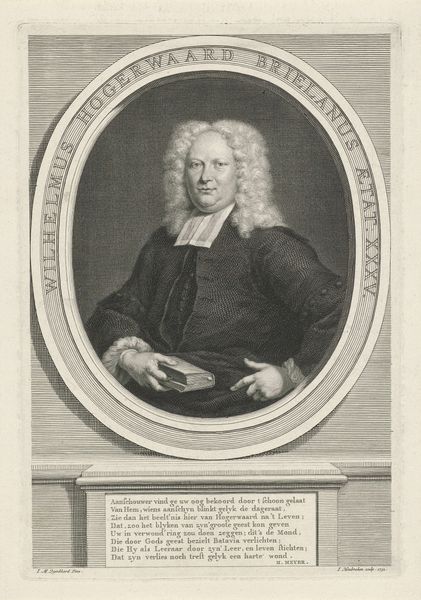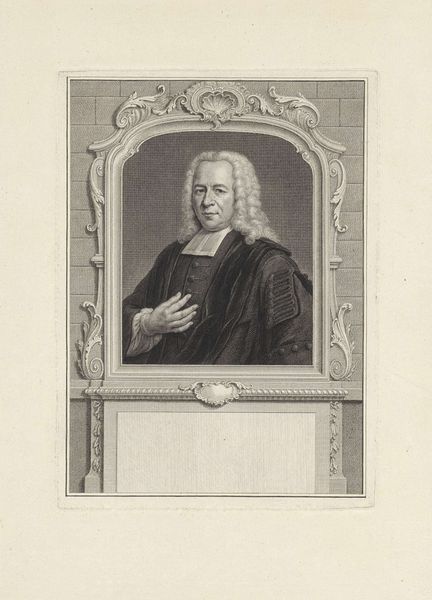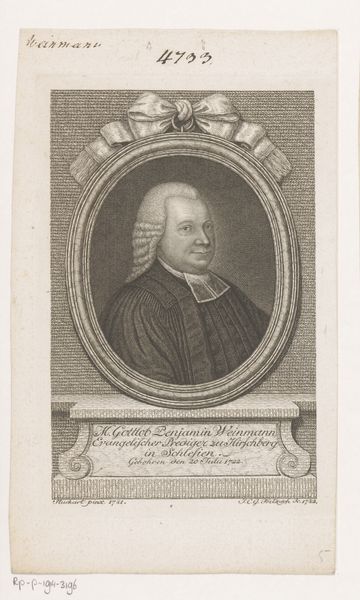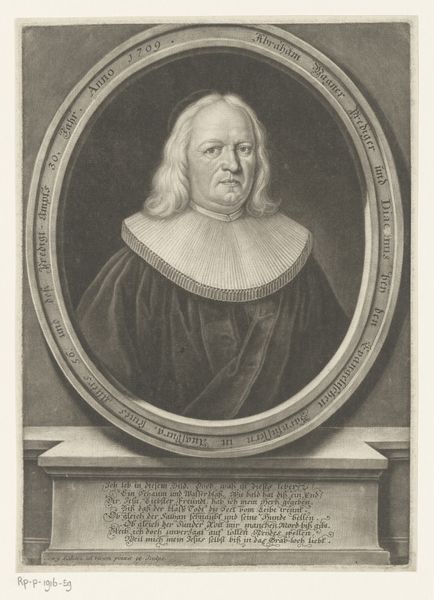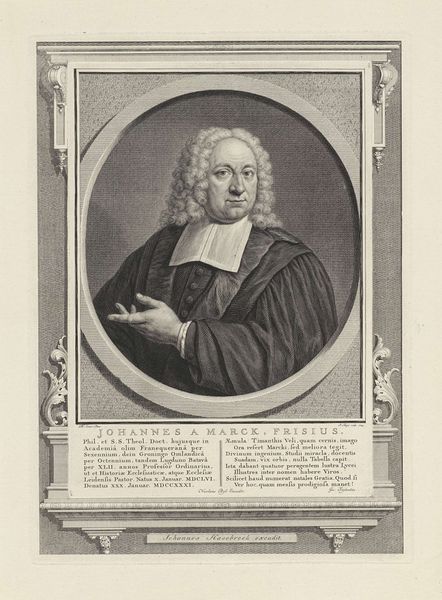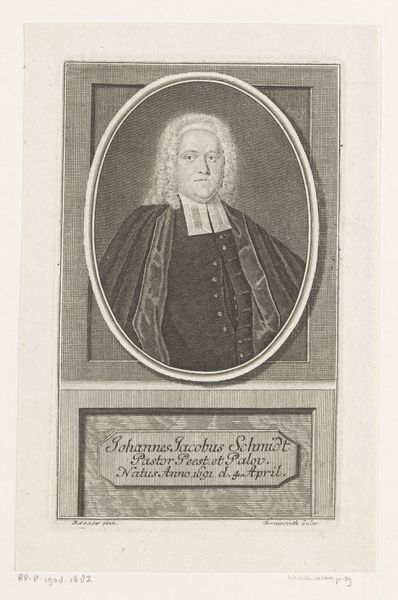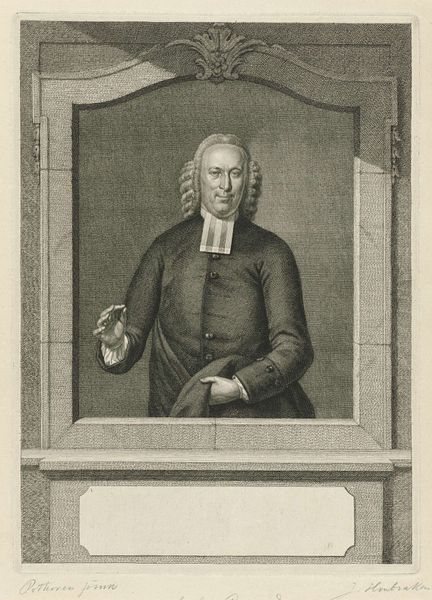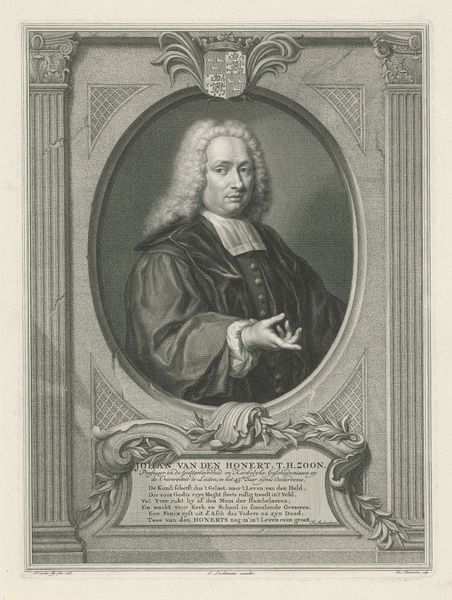
engraving
#
portrait
#
baroque
#
old engraving style
#
academic-art
#
engraving
Dimensions: height 181 mm, width 137 mm
Copyright: Rijks Museum: Open Domain
Curator: This is Pieter Tanjé's "Portret van Wigbold Muilman," an engraving created sometime between 1746 and 1757, now held here at the Rijksmuseum. What catches your eye? Editor: The wig, without question! It's a statement—a literal crown of societal expectation. Beyond that, there is an undeniable air of civic authority here. Curator: Authority is certainly conveyed. The portrait leverages a vocabulary of established visual cues, like the oval frame, the architectural detailing, and the subject's formal attire. But I find myself drawn to the paper he holds. It's a symbol of communication, of knowledge—perhaps a reflection of Muilman's role in society? Editor: Good point. In that era, access to written documents signified not just literacy but power. Was Muilman involved in commerce? Perhaps a public office? His posture suggests engagement with civic life, certainly, maybe the paper also represents this involvement. Curator: Wigbold Muilman was indeed a prominent figure in Amsterdam, heavily involved in trade and governance. And note the inclusion of the coat-of-arms above the portrait. Family lineage, inherited status – they all converge here to reinforce his position. It's very deliberately constructed. Editor: And consider the city visible through the window—the backdrop a deliberate association with a powerful, expanding urban landscape and Amsterdam’s mercantile force. These elements come together to shape and validate his importance. Tanjé captured the era, the mood of upward mobility, really, and put it on display. Curator: It brings us closer to understanding the ambitions of that era—and the values that society then held dear. To have your likeness memorialized this way…it speaks volumes about his aspirations and, frankly, the conventions around image-making in that time. Editor: So, we see it all, status symbols turned to visual emblems! It really goes to show how portraits serve as both personal markers and cultural records. Curator: Exactly, this portrait helps connect us with a rich socio-economic environment through symbolic forms. Editor: A compelling visual archive!
Comments
No comments
Be the first to comment and join the conversation on the ultimate creative platform.
